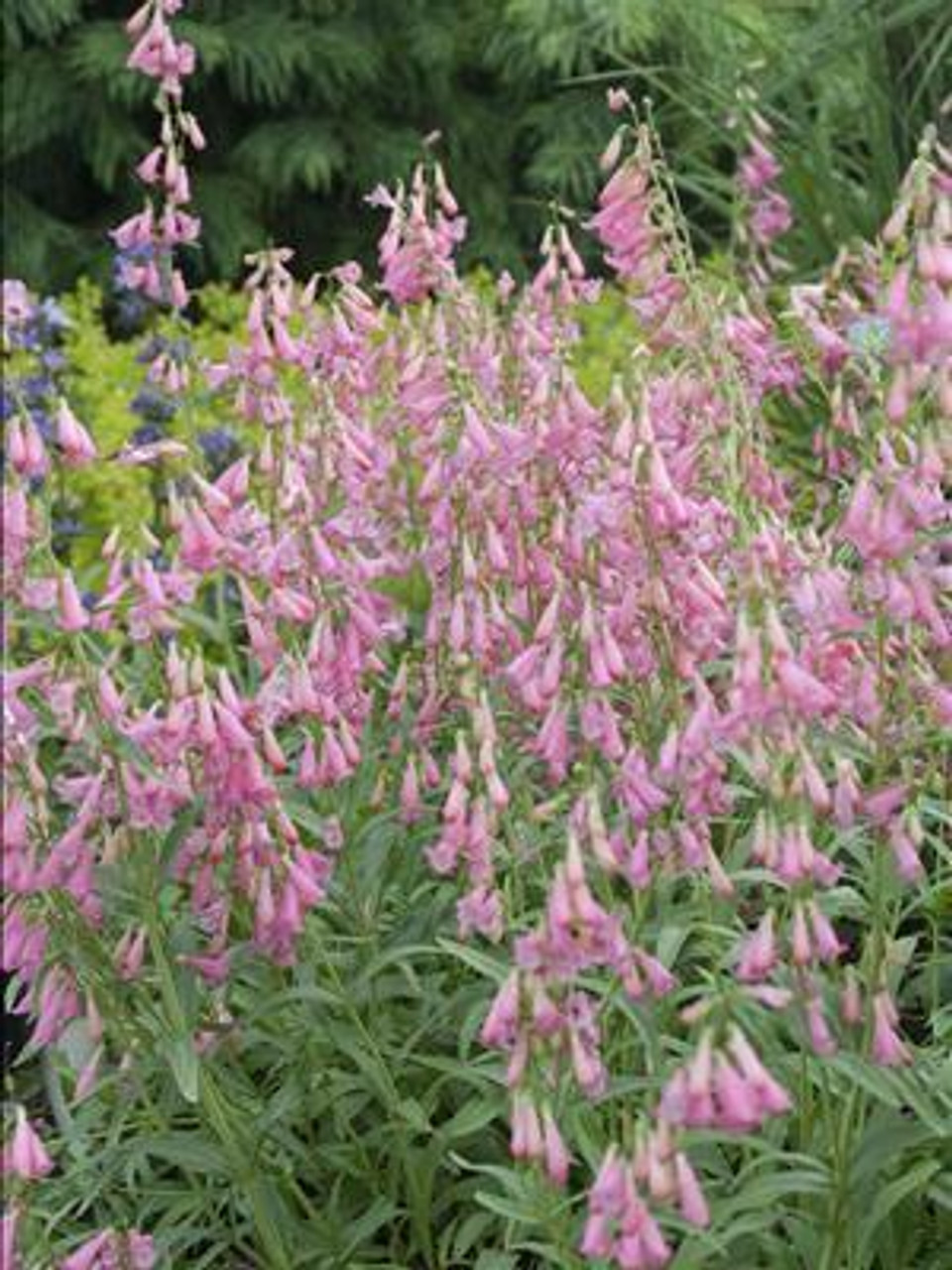Product Description
Penstemon barbatus 'Elfin Pink'Common Name: Beardtongue (because sterile stamen has a tuft of small hairs).
Zones 3 to 8.
Full sun.
Plants reach 12 inches tall and 12 inches wide.
Growth rate: Moderate, erect herbaceous clump-forming perennial.
Bright pink, long, trumpet-shaped flowers are borne in profusion on thin spikes atop erect, rigid stems in early summer. Lance-shaped to ovate, medium green leaves.
Penstemons are very drought tolerant perennials that are easy to grow in average, dry to medium moisture, well-drained soil. Root rot can occur in wet, poorly-drained soils. Soil fertility need only be average, but a light mulch in winter is recommended. Rarely bothered by insects or diseases.
When planted in mass, Penstemons make a tremendous color statement attracting butterflies and hummingbirds. Attributes: flower borders, cut flowers and foliage, drought tolerant, mass plantings, salt tolerant and easy to grow.
Not available for shipment to CA
Other Details
The most important part of the plant is its root system. Healthy roots are the foundation of a healthy, vibrant plant. The type of plug container used is based on the specific needs of the plants. Perennials offered as bare root traditionally perform better when planted as bare root.Planted in a specialized mix, potted plants have well established root systems. Top growth stage will vary depending on the current life cycle and time of year when shipped. In Winter and early Spring dormant plants may be shipped. Dormant plants may be planted right away, even before the last frost date.
Most bare root varieties are field grown for at least one season, though Hemerocallis and Hosta are grown for two seasons. The bulk of the soil is removed during the harvesting process and the tops of most varieties are trimmed back to the crown. They are graded, packed in shredded aspen or sphagnum moss and stored in freezers until ready to be shipped.
See our Container Sizes and Bare Root Perennials pages for more information.
Plant information and care is provided in the Overview section, Plant Genus Page and general information is provided in the Planting Care & Guides. Additional questions can be asked on each Plant page.
Plant Spacing: Using the maximum mature spread or width of a plant to guide spacing, ensures space to grow to full size. To fill an area sooner, plant them closer together. Just remember, future thinning or transplanting may be needed.
Water: Keep a close eye on newly planted perennials, especially throughout the first growing year. Most early plant loss is due to too much or too little water!












